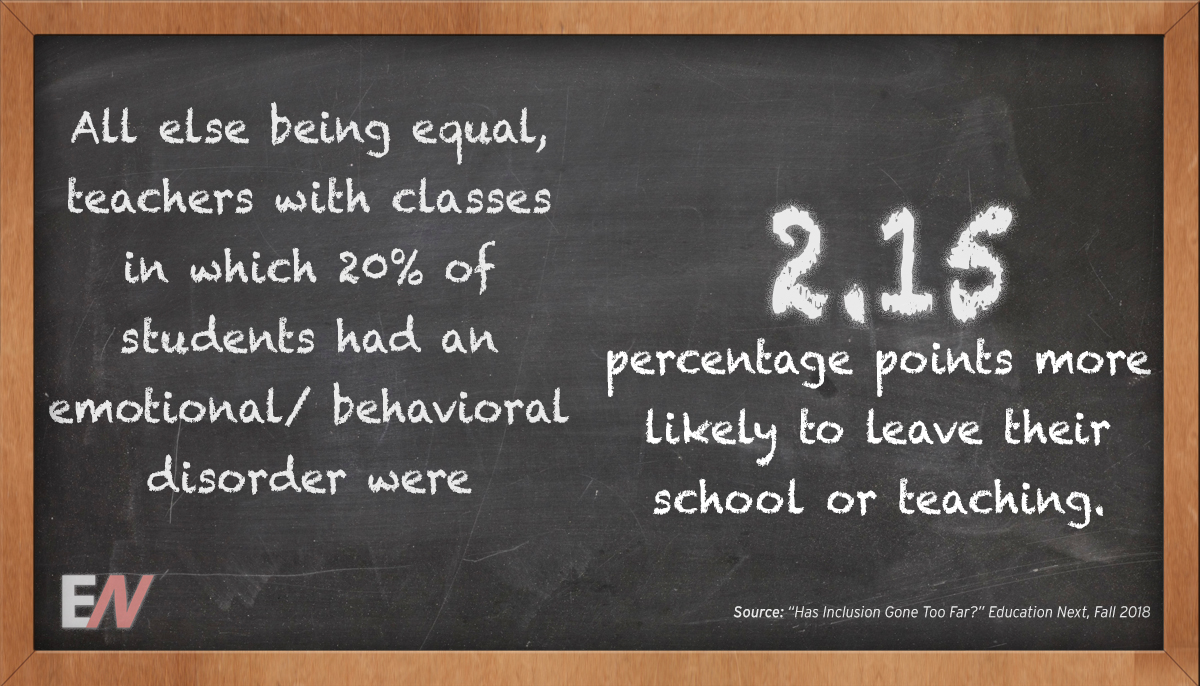
Using an administrative data set from North Carolina, Allison Gilmour estimated the association between the percentage of students with disabilities (SWDs) in teachers’ classes and the rate of teacher turnover, as defined by changing schools or leaving teaching in the state. She found that the probability of turnover increased as the percentage of SWDs in teachers’ classes went up if the teacher was not certified in special education, after controlling for differences in student, teacher, and school characteristics. This increase was especially pronounced when teachers had students with an emotional/ behavioral disorder (EBD) in their classrooms. All else being equal, teachers with classes in which 20 percent of students had an EBD were 2.15 percentage points more likely to leave their school or teaching than teachers who had students with disabilities in their classes, but none with an EBD. To learn more about Gilmour’s findings, read “Has Inclusion Gone Too Far?” on EdNext.org.
—Education Next


